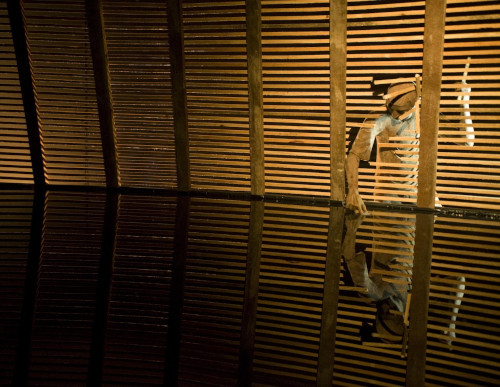They are masters in the ancient art of making barrels to conserve the precious wine of Madera.
The history of Madeira wine is based on the planting of the vineyards of Malvasia from the beginning of its colonization in 1445 by order of Prince Henry, is no less true the importance of the tanners artisans in the economic development of the region. Without these masters of the wood, there would be no barrels to age the famous nectar, or carries it on and off the island. There were so many workshops in downtown Funchal that this ancestral legacy was forever printed in the collective memory through the toponymy of the city's with the famous street of the tanners. With the emergence of bottled wine the art began to decline and manpower that significant hurdle before it was slowly disappearing.
Currently, there are few craftsmen; the Madeira Wine Company currently holds the "monopoly" because it employs a total of four, out of which six are still in active. Rarely ever they do new barrels; there is a reuse of casks made of oak wood imported from France and the U.S.The tanners have a very important role in the maintenance of the pipes, so they are on call at all times in case of any spillage and to be able to put an end to any situation. The last tub to be hand-assembled in the warehouses of Madeira Wine, with a capacity 50.750000 liters of wine, the second largest island, took about 2 months and involved the company's four master tanners.
Just to illustrate, a new barrel of 650 liters takes 3 days to complete from scratch. The process is to put the staves aligned one by one around a metal ring, after all the parts together, the skeleton is inverted and is heated (fire from the center) with the help of arches that allow shape to gain their rounded shape. Once beaten, the hoops are so replaced by definitive ones and are tightened so that they are the same height and distance. The last phase is the scalding, which is nothing more than boiling water, that is inserted in the interior of the cask and that lets you check whether or not there’s a shed, if there are pores or knots in the wood. The tops are generally five pieces of wood that fit in each other. The barrel is then ready for use. João Vieira, one of the master’s tanners recalls that "I came here to work with twenty years old. And I learned. There is one of the masters who have 39 years of service. “The average age of artisans is around 50 years of age, since the younger ones, show little or no interest in being apprentices of this dying art.











